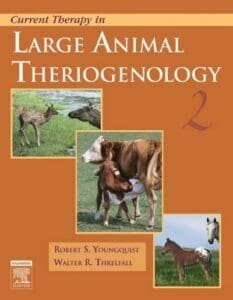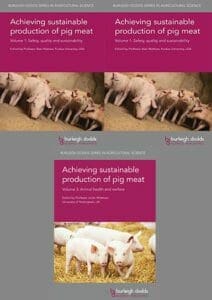Section 1: Introduction
Chapter 1. Introduction to livestock systems
Abstract
Chapter outline
Introduction
Centrality of livestock supply chains in our lives and on our planet
Livestock production systems
Sustainability pathways: from anonymous livestock supply chains into harmonious regenerative value networks
References
Section 2: Animals and health
Chapter 2. Livestock food and human nutrition
Abstract
Chapter outline
Global trends in livestock production, consumption and marketing
The debate over animal food and nutrition
The animal protein dilemma
References
Chapter 3. Livestock xenobiotics and zoonoses
Abstract
Chapter outline
Xenobiotics compounds found in animal food
Zoonoses
Processing and cooking toxins
References
Chapter 4. Healthy livestock production and consumption
Abstract
Chapter outline
Healthy animal husbandry: grass-fed organic
Diverse food for healthy gut microbiomes
Livestock systems, food safety and health
References
Chapter 5. Pesticide safety in livestock products
Abstract
Chapter outline
Introduction
Pesticides, steroids and antibiotics found in animal products
Concerns about setting acceptable daily intake and maximum residue limit
Pesticides’ metabolites, dioxins and adjuvants
Conclusions
References
Chapter 6. Continuous development of animal welfare, with a focus on organic farming
Abstract
Chapter outline
Introduction
Relevance and definition of animal welfare
Comparing animal welfare legislation and standards
Animal welfare legislation and standards in organic animal husbandry: the need for improvement
Outcome-oriented approaches to animal welfare
Research and outcomes on animal welfare in organic farming
Conclusions and recommendations
References
Section 3: Livestock Landscapes
Chapter 7. Livestock and future food supply scenarios
Abstract
Chapter outline
Long-term food supply perspectives
Sustainable Organic Livestock model (SOL-m)
Efficiency revisited
References
Chapter 8. Pastoralism as a response to climate change and water security in Mediterranean mountains and forests
Abstract
Chapter outline
Climate change and desertification in mountain areas
Environmental risks in mountainous rangelands and opportunities of extensive grazing
Toward collective awareness
Conclusion
Chapter 9. Landscape management: ecological engineering in temperate areas
Abstract
Chapter outline
Landscapes
Fundamental elements of landscape management
References
Chapter 10. Let them graze! Potentials of ruminant production outside the feed-food competition
Abstract
Chapter outline
Feeding ruminants: what are their fair resources?
The art of herding: challenges of grassland management and diet composition
The meaning of phytochemical diversity: precision livestock farming on pasture
Less will be more: site-adapted breeds
Wrap-up: the potentials of grasslands for food security, ecological sustainability and animal welfare
References
Chapter 11. The promises of food without soil and toil
Abstract
Chapter outline
A dream of food without dirt
Farm-free foods
Electric food
Algae and insects
Indoor farming
Saving water and land by using more energy?
Urban farming
Another narrative is needed
References
Chapter 12. Livestock as a tool to regenerate land
Abstract
Chapter outline
The biodiversity, desertification and climate nexus
Technological software for complex systems
Animals as biological tools to restore land
Grazing livestock mitigates climate change
Holistic planned grazing
Toward a multiple benefits solution
References
Section 4: Stories from around the world
Chapter 13. Experiences of low-external-input livestock systems
Abstract
Chapter outline
Improving land management through grazing strategies
Subchapter 13.1. Rotational grazing in the flooding pampa, Argentina
About the authors
Subchapter 13.2. Holistic management of livestock, Zimbabwe
About the authors
Subchapter 13.3. Adapting to climate change in grasslands of Inner Mongolia, China
About the author
Subchapter 13.4. Organic livestock management and climate resilience, New Zealand
About the author
Low to zero grain feeding strategies
Subchapter 13.5. Conservation of native vegetation and traditional camel herding in Rajasthan, India
About the authors
Subchapter 13.6. Sustainability of organic dairy production in Tyrol pastures, Austria
About the authors
Subchapter 13.7. Feeding spineless cactus to cattle for drought resilience, Kenya
About the authors
Subchapter 13.8. Integrated organic livestock-crop production system, Thailand
About the author
Alternatives to synthetic agricultural inputs
Subchapter 13.9. Improving nutrient efficiency through organic management, Madagascar
About the authors
Subchapter 13.10. Breeding for gastrointestinal parasite resistance in Merino sheep, Australia
About the authors
Subchapter 13.11. Animals for feeding soils on biodynamic farms, Egypt
About the authors
Section 5: Conclusions
Chapter 14. Full-cost accounting for decision-making related to livestock systems
Abstract
Chapter outline
What we know about current livestock landscapes
Full-cost accounting for improved decision-making
Livestock impacts on the natural, economic, human and social capitals
Aggregating and communicating results
A consumer checklist
Conclusions
References
Index














![Ettinger’s Textbook of Veterinary Internal Medicine 9th Edition [PDF+Videos] Ettinger’s Textbook of Veterinary Internal Medicine 9th Edition [True PDF+Videos]](https://www.vet-ebooks.com/wp-content/uploads/2024/10/ettingers-textbook-of-veterinary-internal-medicine-9th-edition-100x70.jpg)
![Textbook of Veterinary Diagnostic Radiology 8th Edition [PDF+Videos+Quizzes] Thrall’s Textbook of Veterinary Diagnostic Radiology, 8th edition PDF](https://www.vet-ebooks.com/wp-content/uploads/2019/09/textbook-of-veterinary-diagnostic-radiology-8th-edition-100x70.jpg)






